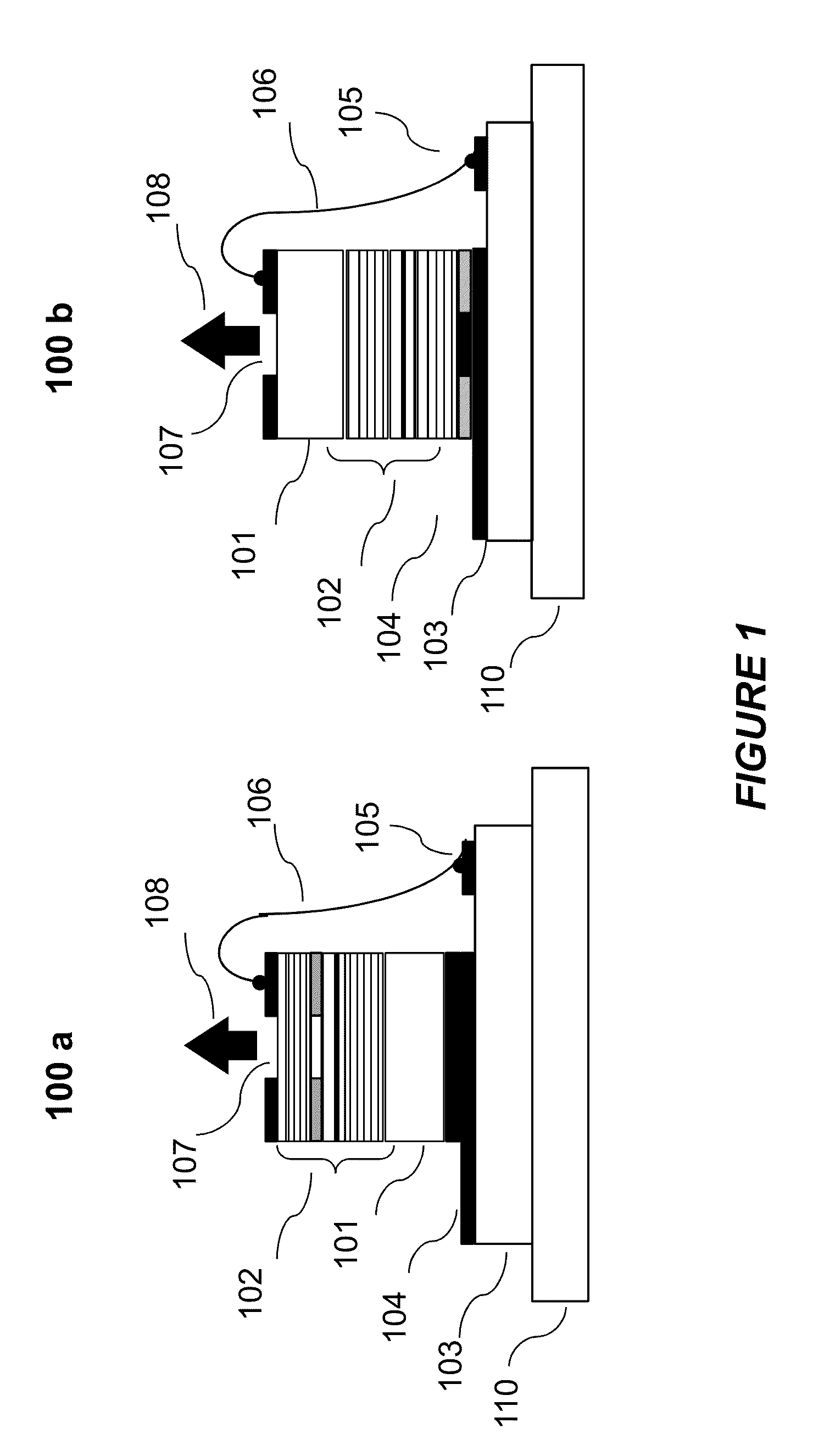Laser Illuminator System
a laser and illumination technology, applied in the field of laser illumination, can solve the problems of high electrical energy requirement for operation, large footprint of mode-locked lasers, and complex cooling peripheral equipment, and achieve the effects of high thermal conductivity, rapid heat dissipation, and high thermal conductivity
- Summary
- Abstract
- Description
- Claims
- Application Information
AI Technical Summary
Benefits of technology
Problems solved by technology
Method used
Image
Examples
Embodiment Construction
[0037]For clarity and ease of discussion, each drawing figure shows a particular aspect or a combination of few aspects that may be implemented in an embodiment either alone or, in combination with one or more aspects shown in other embodiments. An element not shown in any particular embodiment is not be construed as precluded from the embodiment unless stated otherwise. Different aspects presented separately in the preferred embodiments are intended to provide a broader perspective of the invention. Different combinations and sub-combinations of various aspects that may occur to those skilled in the art, still fall within the broader framework of the detailed description of the invention presented in the following sections of the written description.
Single VCSEL Module:
[0038]A laser illuminator may be configured using a single high power VCSEL. In one embodiment, an optical module is configured using a single VCSEL as shown in FIG. 1. Principles illustrated through this exemplary e...
PUM
 Login to View More
Login to View More Abstract
Description
Claims
Application Information
 Login to View More
Login to View More - R&D
- Intellectual Property
- Life Sciences
- Materials
- Tech Scout
- Unparalleled Data Quality
- Higher Quality Content
- 60% Fewer Hallucinations
Browse by: Latest US Patents, China's latest patents, Technical Efficacy Thesaurus, Application Domain, Technology Topic, Popular Technical Reports.
© 2025 PatSnap. All rights reserved.Legal|Privacy policy|Modern Slavery Act Transparency Statement|Sitemap|About US| Contact US: help@patsnap.com



